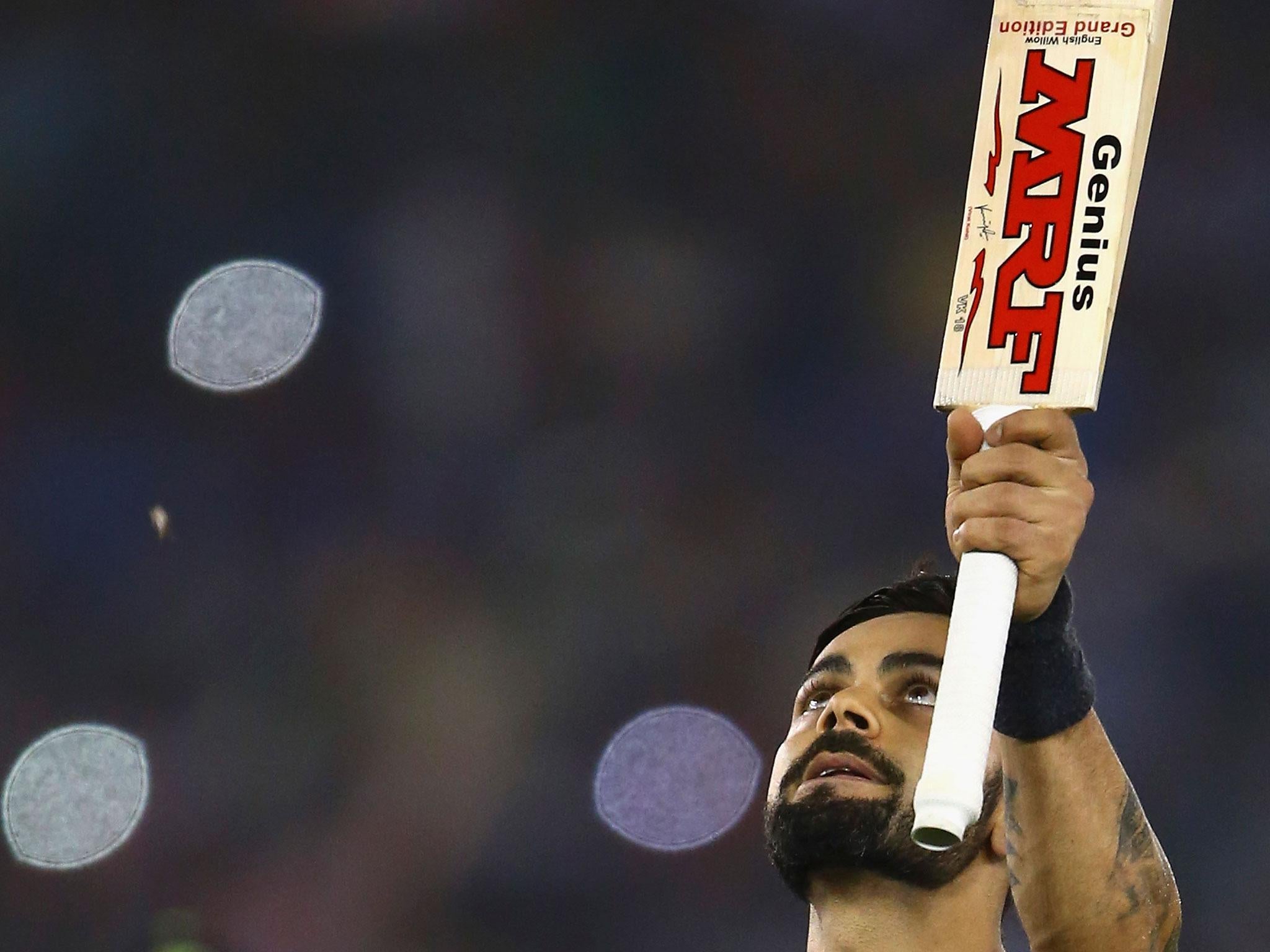What makes Virat Kohli - the master of ODI chases - so good
Kohli does not represent a new age of batsmanship so much as the culmination of all the evolution in batting that has come before

To see Virat Kohli in Pune was to see not merely the best chaser in ODI cricket today, but the best there has ever been, a man whose every innings seems to recalibrate the art of the possible in limited overs cricket. In turning a calamitous 63-4 into a triumphant overhaul of England’s 350-7, Kohli was merely adding to his burgeoning collection of ODI classic innings.
In the history of the format, only six sides have chased down a target of 350. India have managed it three times - twice against Australia and then yesterday - with a Kohli century the common thread in the trio. He now has 17 centuries in 96 ODI innings batting second, equalling Sachin Tendulkar’s record but in 134 fewer innings, and an average of 64.30, with a strike rate of 93.55, in chases. And as a chaser Kohli is equally staggering in T20 cricket: he averages an absurd 84.90 when India bat second.
Nestled within these preposterous raw numbers is a much deeper significance. It has become cliche to describe Kohli, with his tattoos, snarling, unbridled aggression and relentless pursuit of self-improvement, as representative of the brash India, in cricket and beyond.
But what this image risks missing is how, in many ways, Kohli is a throwback. For while some fear that the rise of T20, and the transformation of ODI cricket from a one-day Test to an extended 20-over game, will lead to the sport being taken over by hulking, brutish sloggers, Kohli has a meticulous, classical technique. He has little time for batting pyrotechnics, and why should he? That astonishing, nonchalant and contemptuous flick of Chris Woakes over long on for six, instantly shared by millions on social media in India, was, in essence, a distillation of the best of classical batsmanship, updated for the demands of today. Kohli does not represent a new age of limited overs batsmanship so much as the culmination of all the evolution in batting that has come before. His technique and approach are as suited to the five-day Test game as the modern limited overs one and, as such, can be embraced by lovers of T20 and devotees of the longer format alike.
More than anything, this story has been a triumph for self-belief and single-minded ambition. For all Kohli’s gifts, he is also sustained by the knowledge that he has worked harder than anyone else throughout his whole life.
Nothing has been able to deter him. Aged 18, Kohli was playing in a first-class match for Delhi and was not out overnight. At 3am in the morning, his father died, but Kohli channelled his grief by batting on, saving the follow on and reaching 90; he was only dismissed, reports said, by a poor umpiring decision.
Already, then, it was clear that Kohli had an unusual desire. After he made his ODI debut just before turning 20, his early years for India were littered with some mesmerising innings, like a magnificent Test century at Adelaide in India’s disastrous Australian tour in 2011/12. Still, Kohli threatened not to make good on the true extent of his gifts. After the IPL, in 2012, Kohli shed his burgeoning waist, and embraced the weights instead.
Ever since, Kohli has judged his fitness not against other cricketers, but against the world’s elite athletes: he recently reacted to discovering his body fat percentage was 9 by aiming to reduce it to 7.5: the same as Novak Djokovic.
This fitness is crucial to Kohli’s batsmanship. At Pune, a small ground made twos difficult: instead, Kohli took the opportunity to show off power more than normal. But in run chases, more than the six, Kohli’s defining shot is normally the two. During a chase against Australia at Mohali during the World Twenty20 last year, Kohli scampered four twos in five balls at one point, the streak only broken by a four.
This ability to score twos is allied to an ability to manipulate good balls, even at the very start of his innings, for singles. In the 2014 WT20 semi-final against Sri Lanka, Kohli’s 44 deliveries contained only three dot balls. The upshot is that Kohli can score at greater than a run a ball - sometimes much greater - while eschewing danger. He does not accept the conventional batting tradeoff, that scoring quicker means embracing greater risk.
Where this beguiling journey goes next seems clear: copious runs, thrillingly straddling cricket’s old and new eras in all three formats. And it increasingly seems possible to imagine the ultimate final destination, too. Aged 28, Kohli now has 42 international centuries, and an insatiable desire for many more. Tendulkar’s round 100 international centuries were once presumed to be unassailable - but then again, until Kohli, the same was thought about one-day targets of over 350, too.
Subscribe to Independent Premium to bookmark this article
Want to bookmark your favourite articles and stories to read or reference later? Start your Independent Premium subscription today.



Join our commenting forum
Join thought-provoking conversations, follow other Independent readers and see their replies
Comments